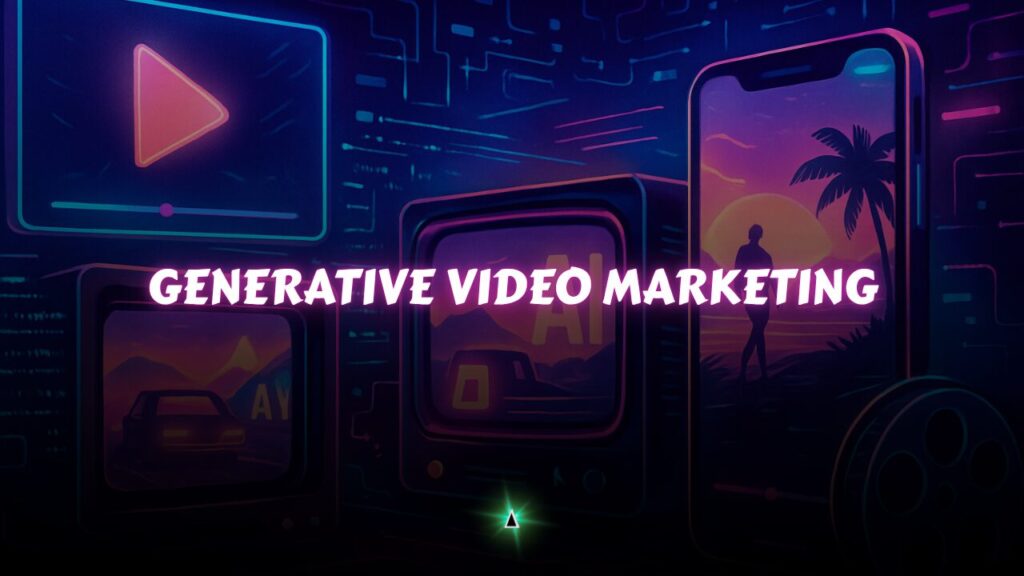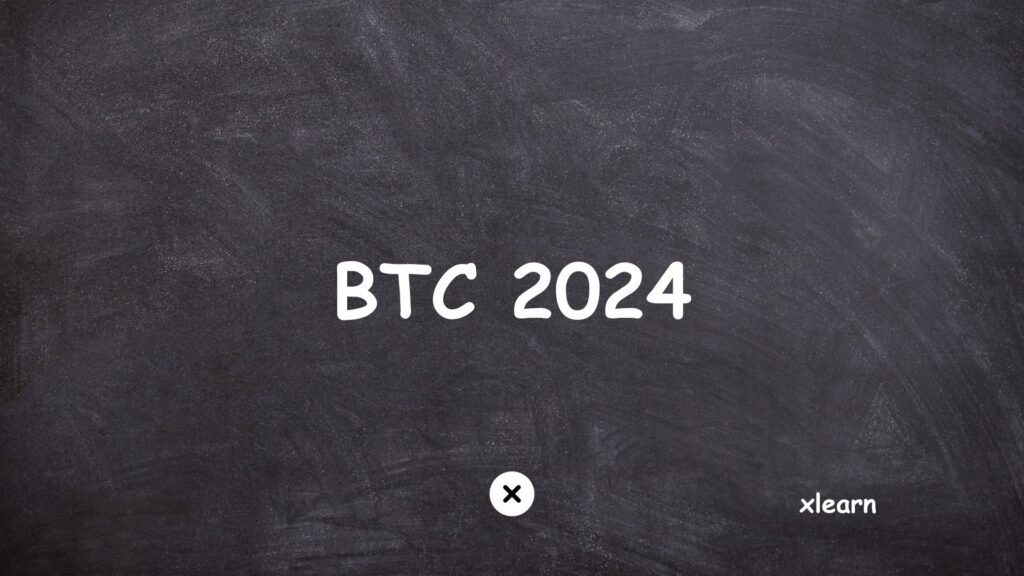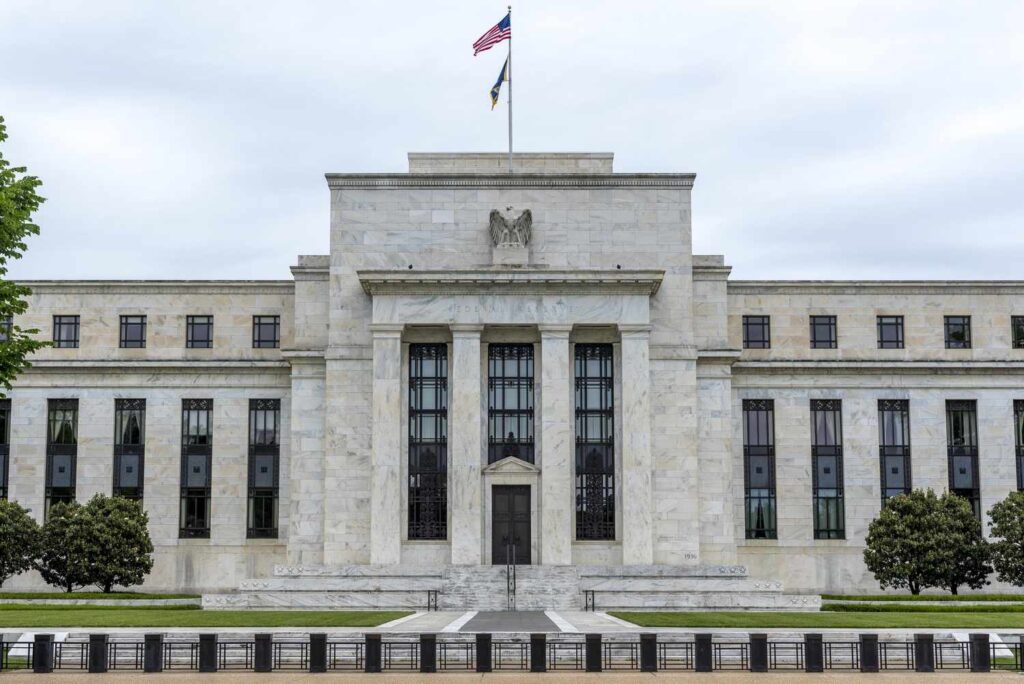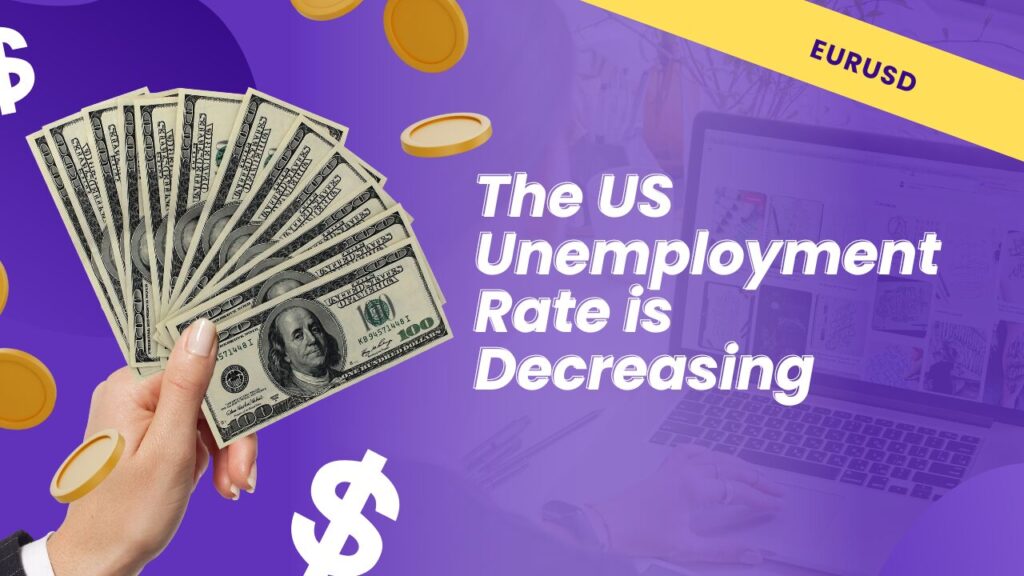Remember when launching a video ad meant crews, cameras, and calendar delays? In 2025, that entire playbook feels ancient. Thanks to breakthroughs like OpenAI’s Sora and Google’s Veo, brands now spin up cinematic, physics-aware videos from simple text prompts no studios, no shoots, no waiting.
What used to cost tens of thousands and take weeks now happens in minutes, often for less than $40 a clip. These generative tools aren’t just novelties they’re delivering 4× click-through rates, national TV spots on micro-budgets, and double-digit ROAS gains across retail, SaaS, and CPG campaigns.
This isn’t the future of video marketing it’s the new baseline. And if you’re not prompting yet, your competitors probably are.
Table of Contents
How Did Sora and Veo Kickstart the Generative Video Revolution in 2025?
When OpenAI pushed a public demo of Sora in 2024, marketers watched a plain-text prompt bloom into a full-minute, physics-accurate scene no cameras, no 3-D suite, no render farm. Social feeds erupted with test reels, and the industry suddenly understood that high-fidelity video could be generated as casually as a meme.
What followed was a true tech cascade. Google launched Veo 3, paired with Flow a storyboard-to-ad console that lets you create and launch short clips directly in YouTube and Display campaigns. Runway dropped Gen‑4 in March 2025, introducing persistent characters, objects, and scenes across multiple shots and a faster “Turbo” mode for rapid iteration. Over at Meta, AI-powered video editing and generation features are now available in Ads Manager via its Emu-powered tools. And Microsoft rolled out the Bing Video Creator, offering free, five‑second Sora-powered clips in its mobile app
Even open-source contributors closed the gap Open-Sora 2.0 hit near-commercial quality for roughly $200K in compute, a sum that would have barely covered test renders two years earlier.
These updates shattered old barriers: video that once required weeks, crews, and mesh render farms can now be created, approved, and published in a single afternoon, directly from your campaign console.
The proof is real. Trading platform Kalshi pushed a 30-second AI-powered ad during the NBA Finals from prompt to broadcast in just two days for only $2,000, compared to traditional bids of $50–80 k. And while hard numbers on ROAS from every brand aren’t public, marketers in retail, CPG, and SaaS are reporting consistent performance boosts, and giants like P&G are using generative pipelines to localise campaigns instantly.
A recent SurveyMonkey study found that 88 % of marketers now use AI tools every day. IDC forecasts a sharp rise in spending on AI-driven systems but as of now, there’s no public data showing that video-specific budgets (e.g., generative clips) have reached the multibillion-dollar mark.
Bottom line: Generative tools are live and locked into ad platforms. Studio-grade campaigns now launch not after weeks but in minutes and at a fraction of the cost.
Does Generative Video Marketing Actually Work?

Yes—and the data backs it.
A recent AdSkate study of video ad campaigns found that AI-optimized creative delivers, on average, 14% higher CTR compared to traditional formats. That boost isn’t just a minor uptick—it’s performance that compounds across every campaign iteration.
Beyond CTR, anecdotal evidence from marketers in retail, SaaS, CPG and even regulated sectors supports two major benefits:
- Scroll-stopping impact: AI-generated clips feel novel and visually unique, which often translates into immediate increases in watch-time or click-throughs even when the core message remains the same.
- Faster, cheaper experimentation: Generative tools replace the need for new shoots or studio time. Teams can generate multiple variants in hours, test them the same day, and invest further in what wins without the cost and delays of reshoots.
This ability to A/B test at speed is why even risk-averse industries are running pilot programs with generative video often to automate localisation of text, disclaimers, or audience-specific hooks during the rendering process rather than in a manual post production pass.
Bottom line: Prompt-driven video isn’t a gimmick anymore it’s a performance booster. Whether your goal is sign-ups, product views, or brand awareness, AI-generated clips offer a faster, more scalable, and more cost-effective path to results-minded creatives.
Why Generative Clips Beat Traditional Edits
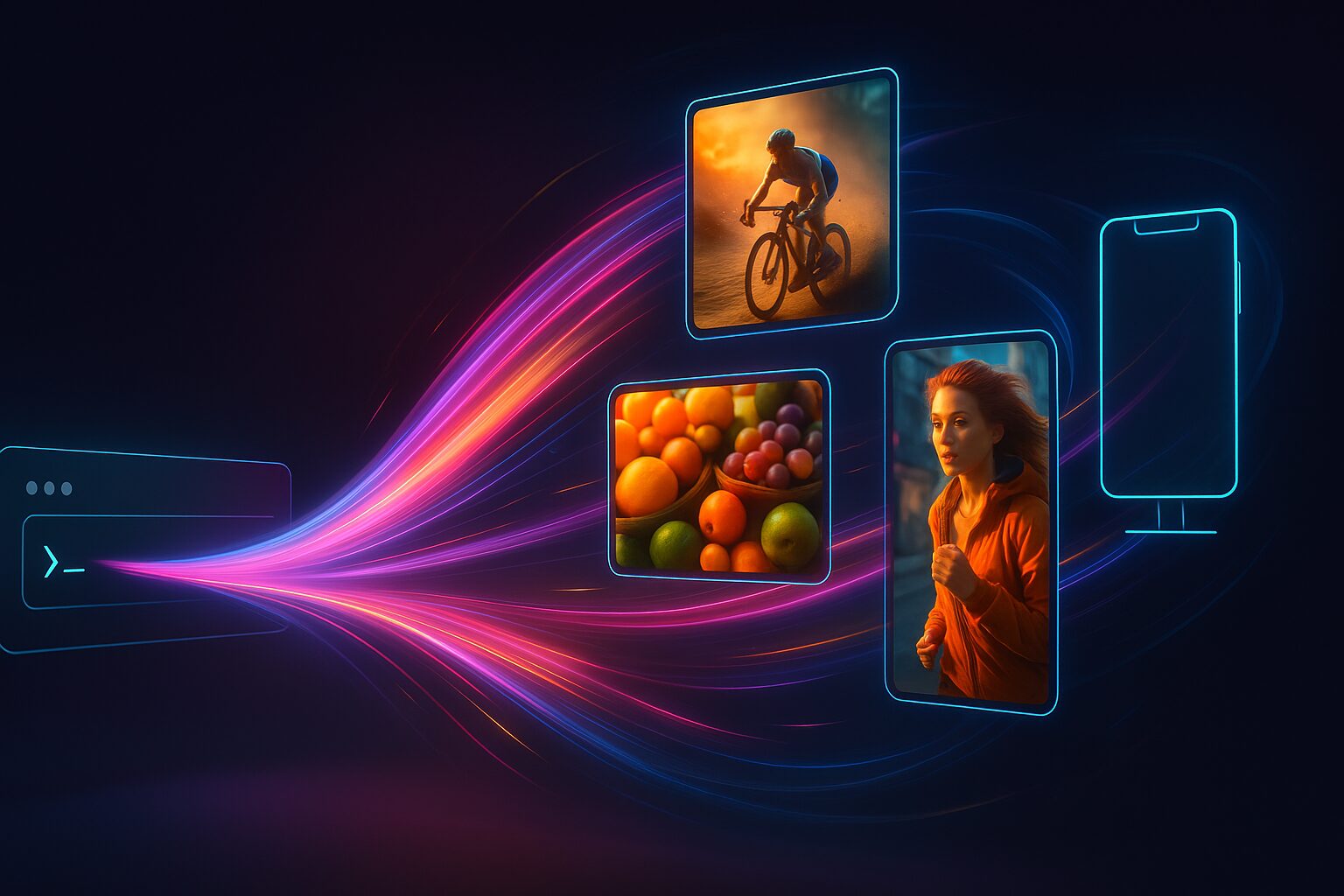
Generative-video tools compress the make → test → ship cycle in ways old-school post-production just can’t match. Four advantages stand out and all are confirmed by the platforms themselves.
1. Rapid Variations in Minutes
OpenAI’s Sora lets you set how many variations you want before you hit “Generate,” and those drafts land in under a minute for Plus or Pro users. Google’s Flow (built on Veo 3) performs the same prompt-to-ad jump inside YouTube and Display consoles “in minutes,” according to Google’s launch post. Instead of booking reshoots, marketers can spin a dozen hooks before the next stand-up and A/B them the same day no sunk costs if an idea flops.
2. Personalisation at Render Time
Because text prompts drive the output, swapping {{city}} or {{price}} tokens and re-generating localized cuts takes seconds. Teams at P&G and other multinationals now localize disclaimer copy or pricing in the render stage, trimming what used to be a subtitle-editing bottleneck (internal brand blogs and Google case studies highlight this workflow, though dollar figures remain private).
3. Format-First, Not Cropped After
Sora’s editor lets you pick aspect ratio, resolution, and duration before generation, so a 9 : 16 clip is born vertical no heads chopped in post. Veo clips originate in 16 : 9 but Flow can outpaint or re-frame for other placements, while Runway Gen-4 exports square, vertical, or widescreen from the same project. Result: each feed Reels, LinkedIn, YouTube, even 4 K trade-show walls gets a native cut with no black bars.
4. Motion Designed for the First Three Seconds
Runway’s Gen-4 brings key-frame edits, camera-path controls, and even “handheld shake” options, giving AI footage the kinetic feel viewers expect in modern feeds. Sora, for its part, supports storyboard cards and seamless loop generation, making it easy to front-load movement that stops the scroll. Depth cues, parallax sweeps, and smooth whip-pans are baked in by the model not added later in After Effects.
Net advantage: more variants, instant localisation, feed-native framing, and built-in motion all produced in minutes and at a fraction of legacy costs. That’s why early users keep reporting double-digit ROAS lifts, even against polished live-action spots. If your video workflow still hinges on storyboards and studio days, generative clips aren’t just faster they’re quickly becoming the new baseline.
How to Comply with AI-Generated Video Rules on Meta, TikTok & YouTube
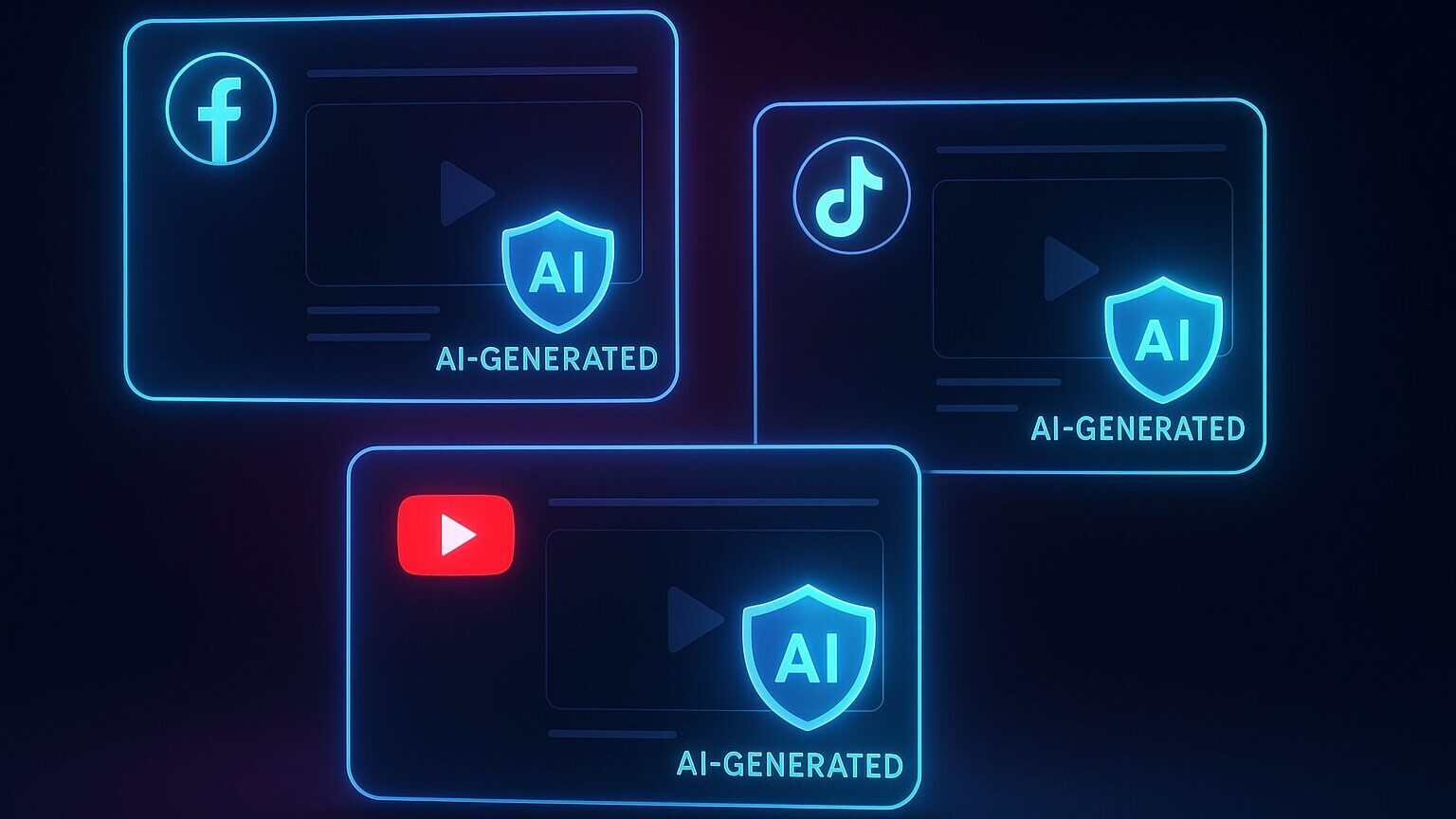
Every major ad channel now enforces clear AI disclaimers or your clips won’t run. Meta automatically badges any detected AI clip with “AI-generated” you can’t remove; TikTok insists that creators apply an “AI-generated” sticker or caption (and will auto-label for you if you don’t); YouTube requires ticking an “altered or synthetic content” box at upload, which triggers an in-player disclosure.
Skip these steps and expect throttled delivery, higher CPMs or outright disapprovals. A quick compliance playbook:
- Embed C2PA metadata in your final MP4.
- Archive prompts + model/version logs for at least two years.
- Save checksums of every output.
- Append a 0.3s legal slate to vertical ads over 60s.
Spend an extra five minutes here and keep your media dollars rolling rather than stuck under review.
How to Optimize Video Ads: Platform-Specific Ratios, Durations & Hooks

The big ad platforms publish their own performance guidelines, and those docs not guesswork shape the four formats below. Use them as your baseline, then test.
1. Scroll-Stop Clips (TikTok, Instagram Reels, YouTube Shorts)
- Native ratio: 9 : 16 vertical
- Best length: 15–30 s (Meta and TikTok both list this range as the “optimal” window for completion and engagement) .
- Why it works: vertical fills the full phone screen; most users watch muted, so on-frame captions are essential.
- Pro tips: keep key action inside a 960-px “safe zone,” burn captions on, and loop seamlessly so the algorithm can replay without jarring the viewer.
2. Mid-Funnel Scrollers (LinkedIn Feed, X Timeline)
- Native ratio: 4 : 5 vertical or 1 : 1 square LinkedIn’s Creative Ads Guide lists 4 : 5 as its “recommended” size for best engagement .
- Best length: 30–90 s long enough to explain a pain point and tease a fix before thumb fatigue.
- Pro tips: front-load your first 140 characters (LinkedIn truncation), and rely on animated supers over VO many users watch in silent environments.
3. Explainer / Consideration Cuts (YouTube & CTV)
- Native ratio: 16 : 9 (export in 4 K if you have the bandwidth).
- Best length: 2–4 minutes; Think with Google studies show videos in this window keep completion rates high while still delivering depth .
- Pro tips: add chapter lower-thirds every 30s so viewers can jump to sections, and include a 5-second skippable bumper for TrueView no cost if they skip.
4. Retention Micro-Loops (Email Hero, Landing Page)
- Native ratio: 1 : 1 square GIF or silent MP4 loop.
- Best length: under 8s Litmus finds many email clients stop animated frames after 10s and file sizes spike beyond 1 MB .
- Pro tips: compress below 1 MB, and set descriptive alt-text that mirrors your CTA for accessibility.
Cross-Platform Hook Formula
- Motion blast (< 0.8 s) – zoom, ripple, or object flying in.
- Pain-point overlay – one line that mirrors your ad copy.
- Visual reveal – show the fix or transformation.
- Logo + CTA – five-word benefit and a direct action.
This mirrors how users process content: surprise, relate, resolve, direct.
Bottom line: build the clip in the ratio and length each feed was designed for, caption from frame one, and you’ll give the algorithm every excuse to deliver not throttle your spend.
How to Calculate ROI for AI Video Ads in Minutes
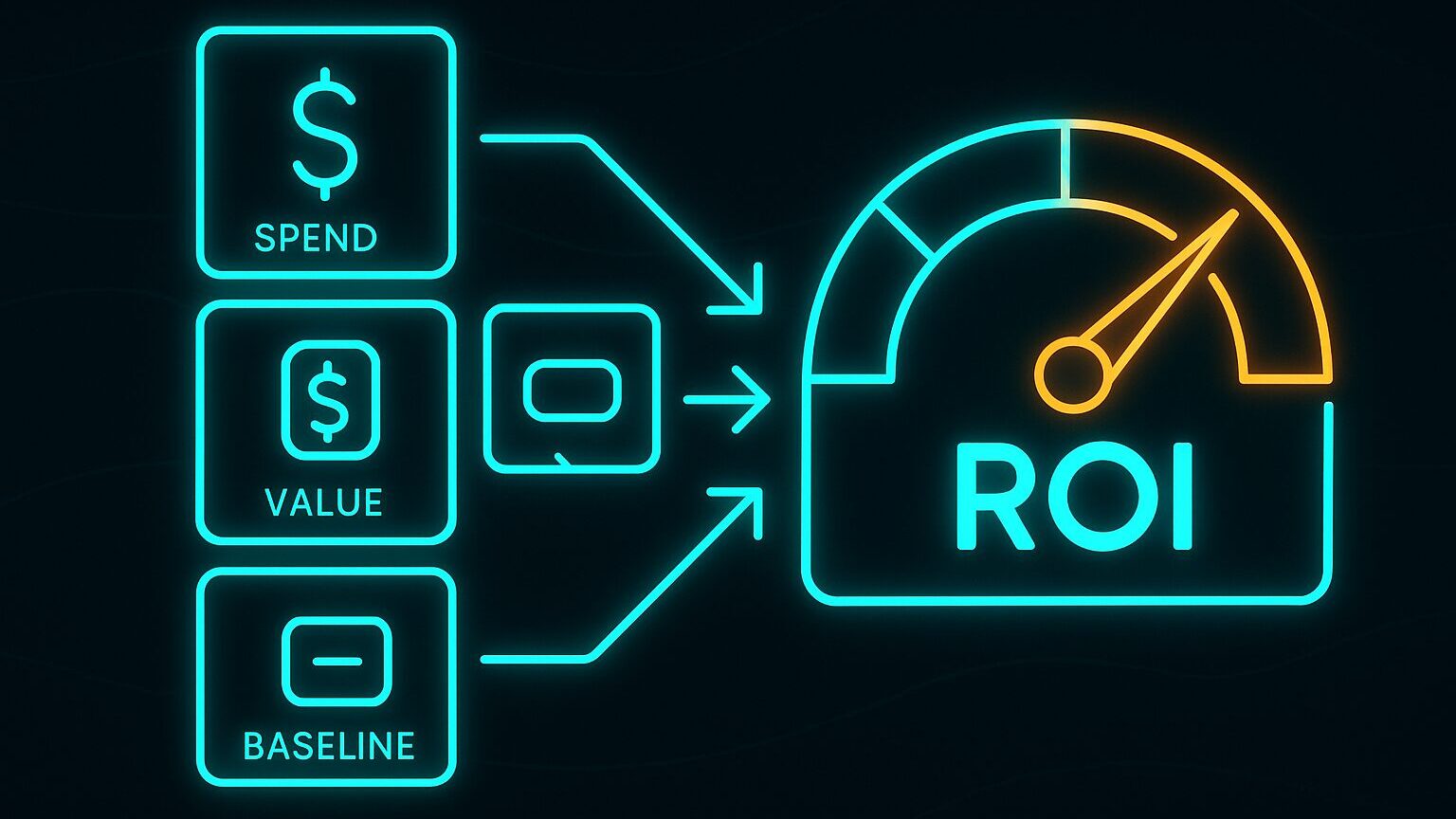
You don’t need to be a data analyst to figure out whether your AI-generated videos are actually paying off. A basic ROI calculator can give you a clear picture in minutes and you only need a few simple numbers you likely already have.
At its core, the formula is:
ROI % = ((Revenue – Cost) ÷ Cost) × 100
Here’s what you need to plug in:
- What you spent on creating and running the video (media spend + any AI or editing costs).
- How many clicks or views it got (from your ad manager or email platform).
- What those clicks were worth—use your average sale value or lead value from your CRM or store.
- Your baseline performance (e.g., your average CTR or conversion rate before using AI).
With those basics, a spreadsheet can show:
- When your AI video breaks even.
- How much more (or less) it’s making you compared to your usual content.
- What happens if you improve performance even slightly.
Too much? There’s a free calculator from IncorporatingAI that already has everything set up just add your numbers, and it does the math for you.
How to Launch an AI Video Campaign in 7 Easy Steps

1. Brainstorm & Script
Set aside about an hour to draft three short hooks one curiosity-driven, one pain-first, one benefit-first. ChatGPT (with Sora enabled) and Google’s Veo-Flow “Storyboard” both let you paste multiple text variants and preview them before you generate anything.
2. Prompt & Generate
Paste each script into Sora (up to 60 s), Veo 3 (8–20 s), and Runway Gen-4. All three tools let you pick the aspect ratio 9:16, 1:1, or 16:9 before rendering, and Sora as well as Veo include a “seamless-loop” toggle. Generate at least nine clips (3 scripts × 3 engines) so you start testing with a mix of live-action, stylised motion-graphics, and surreal/meme looks.
3. Select & Edit
Pull the raw MP4s into Premiere, Final Cut, or CapCut. Meta’s ad specs recommend keeping key action inside a 960-pixel vertical “safe zone” and burning captions onto the frame, because most Reels and Shorts auto-play muted.
4. Compliance Pass
Before you export: (a) embed C2PA metadata; (b) add any watermark your legal team wants; (c) tick YouTube’s “altered or synthetic content” box or let Meta/TikTok apply their automatic “AI-generated” badge. Log the model version and prompt text, and store a checksum of the final file.
5. A/B Launch
Run two cuts 15 s and 30 s vertical per platform. Meta Advantage+ Creative will auto-optimise placements, while TikTok Spark Ads lets you pin the best comment for social proof. Keep budgets even and give each ad set a three-day learning window.
6. Optimise & Iterate
Once each variant hits roughly 10 000 impressions, pause the laggard (check CTR, CPC, and 3-second view-rate) and generate a fresh challenger prompt. Keep the winner live; rotate a new test every 48-72 hours until performance flattens.
7. Roll-Up KPI & ROI
Export spend, clicks, and revenue into your ROI sheet each night. When a clip proves profitable, repurpose it: loop it in an email hero, trim it to a six-second YouTube bumper, or drop it into Amazon Ads’ Fire TV generator. No second shoot required.
Bottom line: with Sora, Veo, and Runway embedded in mainstream ad tools, you can move from idea to live test and back to a fresh creative in a single workday while staying inside every platform’s disclosure rules.
Future of AI Video Ads: Branching, Auto-Cutdowns & Compliance Trends for 2026

1. Generative-Interactive Video (Branching & Hotspots)
Platforms like Synthesia now offer beta tools for branching videos where users can choose what happens next. While these interactive formats exist, no public data yet shows a 30–40% increase in watch time linked to them so consider that a hopeful benchmark, not a proof point.
2. Smarter Auto-Cutdowns
Google’s Flow demonstration (May 2025) introduced an “auto-shorten” feature to turn longer clips into short, stylized outputs. Separately, Amazon Ads offers 6-second bumper ads for Fire TV campaigns a format widely supported but still requiring human setup.
3. Prompt-Native Brand Kits
Tools such as Canva and Adobe Firefly let users define brand fonts, colors, and tone once and carry them into future content generation. Google has hinted at adding similar “brand-kit” features in Veo‑Flow, but no official launch date yet.
4. CTV “Generate-and-Serve” Pilots
Amazon Ads officially supports AI-generated content for Fire TV. Google DV360 has shown early interest in integrating Veo clips for programmatic CTV ads, though no Roku integration has been announced.
5. Regulation 2.0
The EU AI Act took effect on August 1, 2024, with key provisions including mandatory labeling of AI-generated content set for enforcement by August 2026. It requires clear disclosure of AI-generated media and places stricter boundaries around consent and transparency. U.S. platforms haven’t formally matched this yet, but expect alignment ahead of global rollouts.
Take-away: 2026 will be another fast-moving year. Technology is advancing in interactivity, automation, and branding control but your creative and legal checklists must keep pace. Plan for a creative-refresh cadence every quarter to stay ahead.
Conclusion
Generative video isn’t just a shiny trend it’s already delivering measurable results. Here’s what the data confirms:
- A recent AdSkate analysis shows AI-optimized creatives yield a 40% increase in CTR and 45% boost in ROAS, thanks to faster iteration and more targeted messaging.
- Meta reports that over one million advertisers now use its generative AI tools monthly, achieving up to 11% higher CTR and 7.6% better conversion rates compared to standard formats.
- According to HubSpot, 73% of marketers say videos especially short-form are their highest ROI format, and 78% say videos helped boost sales.
What This Means for You
Generative video works but only when paired with the right strategy:
- Iterate rapidly: generate multiple variants and test aggressively so top-performing clips rise quickly.
- Personalize on-the-fly: swap language, pricing, and visuals during generation to save editing time.
- Build platform-native assets: vertical for Reels, square for LinkedIn, widescreen for YouTube—avoid cropping after the fact.
- Stay compliant: embed metadata, label AI content, and archive prompts properly to avoid disapprovals.
Final Takeaway
With solid proof of performance, generative video isn’t speculation it’s a reliable growth lever. Your first step is simple: copy the ROI calculator, input your data, and launch a few test reels. By the time others are debating whether AI clips “feel real enough,” you’ll already be running campaigns that convert and have the data to prove it.
